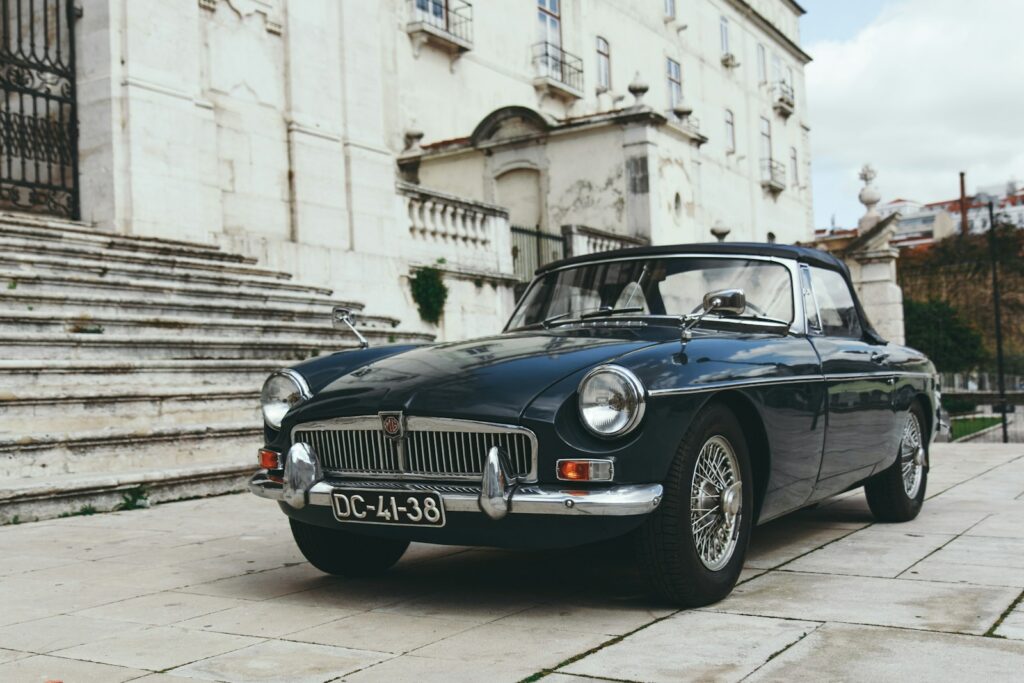Once considered a niche pursuit with significant risks, the landscape of classic car ownership has undergone a remarkable transformation in recent years. These vintage vehicles are now widely recognized as increasingly popular and genuinely worthwhile investments. With their numbers dwindling and examples becoming rarer over time, the vast majority of classic, investment-grade cars are on a steady upward trajectory in terms of value. This offers a unique proposition: not only do these vintage automobiles consistently deliver profitable long-term financial returns, but they also provide a level of enjoyment and tangible asset appreciation that money sitting idle in a bank account simply cannot match.
Indeed, the financial arguments for automotive assets are compelling. The past half-decade alone has witnessed an enormous surge in the popularity of classic cars, leading to a marked rise in traffic and sales across premier online auction platforms like Bring a Trailer, The Market By Bonhams, and Collecting Cars. This heightened interest has translated into significant appreciation, with certain classics experiencing annual gains as high as 25%. This rate of return is approximately 2.5 times the S&P 500’s average annual return, demonstrating the robust nature of this alternative asset class. Even on the lower end, annual gains of 10-15% are not uncommon, underscoring the consistent profitability.
However, it is crucial for potential investors to be fully aware of the inherent downsides, risks, and ongoing expenses associated with classic car investment. Unlike a piece of art that can be simply displayed, investment-grade cars demand continuous care and additional expenses to preserve their value. This includes costs for long-term storage, meticulous maintenance, and often specialized parts and mechanics, particularly for rare or exotic models. Furthermore, insurance can be expensive, sometimes requiring coverage from specialty outfits with conditions such as limits on use and mileage. It is also important to remember that classic cars are fundamentally a long-term investment, not a quick flip, and their liquidity is lower than that of financial assets. Despite these considerations, the right classic car offers a unique blend of financial appreciation and profound personal satisfaction.
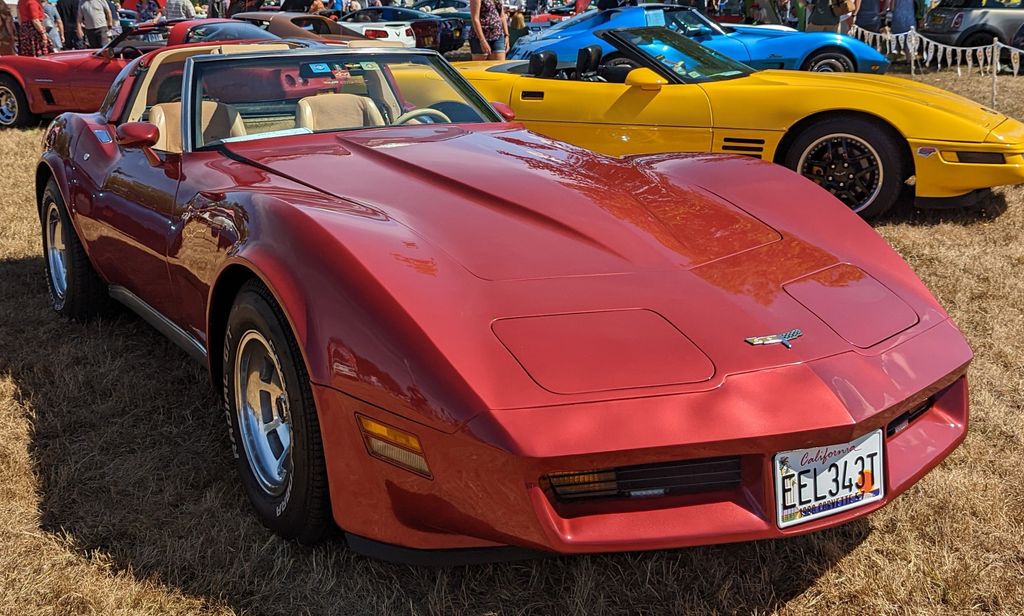
1. **1978–1982 Chevrolet Corvette (C3, Later Years)**The late C3 Corvette often finds itself overshadowed by its chrome-bumpered predecessors, which have seen their values soar out of reach for many enthusiasts. Yet, these later C3 models present a compelling investment opportunity, delivering that quintessential Corvette style, a charming V8 presence, and the distinctive long-hood, coke-bottle profile—all without the prohibitive initial cost. This makes them an accessible entry point into classic American performance.
The 1978 refresh marked a significant evolution for the C3, introducing a dramatic fastback glass hatch that redefined its rear profile. Subsequent styling tweaks into the 1980s further enhanced its wide, low-slung stance, evoking a sense of classic American road presence. While horsepower figures of this era were moderated by emissions regulations, the robust torque delivery remained impressive. The legitimate small-block rumble and the liberating appeal of T-top panels contribute significantly to a thoroughly enjoyable driving experience.
From a practical investment standpoint, the later C3 Corvette offers exceptional value. It stands as one of the most affordable pathways to classic Corvette ownership, underpinned by widespread parts availability and strong enthusiast support. The vehicle projects the aesthetic of a far more expensive car, effectively delivering a premium visual experience without the substantial financial commitment. With typical purchase prices ranging from $12,000 to $18,000, it represents a V8 icon that continues to command attention and appreciate in the classic car market.
Car Model Information: 1957 Chevrolet Corvette Base
Name: Chevrolet Corvette
Caption: 2021 Chevrolet Corvette C8
Manufacturer: Chevrolet
Production: 1953–present
ModelYears: bulleted list
Assembly: bulleted list
Class: Sports car
BodyStyle: coupé
Layout: Front-engine, rear-wheel-drive layout,Rear mid-engine, rear-wheel-drive layout
Categories: 1950s cars, 1960s cars, 1970s cars, 1980s cars, 1990s cars
Summary: The Chevrolet Corvette is a line of American two-door, two-seater sports cars manufactured and marketed by General Motors under the Chevrolet marque since 1953. Throughout eight generations, indicated sequentially as C1 to C8, the Corvette is noted for its performance, distinctive styling, lightweight fiberglass or composite bodywork, and competitive pricing. The Corvette has had domestic mass-produced two-seater competitors fielded by American Motors, Ford, and Chrysler; it is the only one continuously produced by a United States auto manufacturer. It serves as Chevrolet’s halo car.
In 1953, GM executives accepted a suggestion by Myron Scott, then the assistant director of the Public Relations department, to name the company’s new sports car after the corvette, a small, maneuverable warship. Initially, a relatively modest, lightweight 6‑cylinder convertible, subsequent introductions of V8 engines, competitive chassis innovations, and rear mid-engined layout have gradually moved the Corvette upmarket into the supercar class. In 1963, the second generation was introduced in coupe and convertible styles. The first three Corvette generations (1953–1982) employed body-on-frame construction, and since the C4 generation, introduced in 1983 as an early 1984 model, Corvettes have used GM’s unibody Y‑body platform. All Corvettes used front mid-engine configuration for seven generations, through 2019, and transitioned to a rear mid-engined layout with the C8 generation.
Initially manufactured in Flint, Michigan, and St. Louis, Missouri, the Corvette has been produced in Bowling Green, Kentucky, since 1981, which is also the location of the National Corvette Museum. The Corvette has become widely known as “America’s Sports Car.” Automotive News wrote that after being featured in the early 1960s television show Route 66, “the Corvette became synonymous with freedom and adventure,” ultimately becoming both “the most successful concept car in history and the most popular sports car in history.”
Get more information about: Chevrolet Corvette
Buying a high-performing used car >>>
Brand: Chevrolet Model: Corvette
Price: $67,991 Mileage: 39,412 mi.
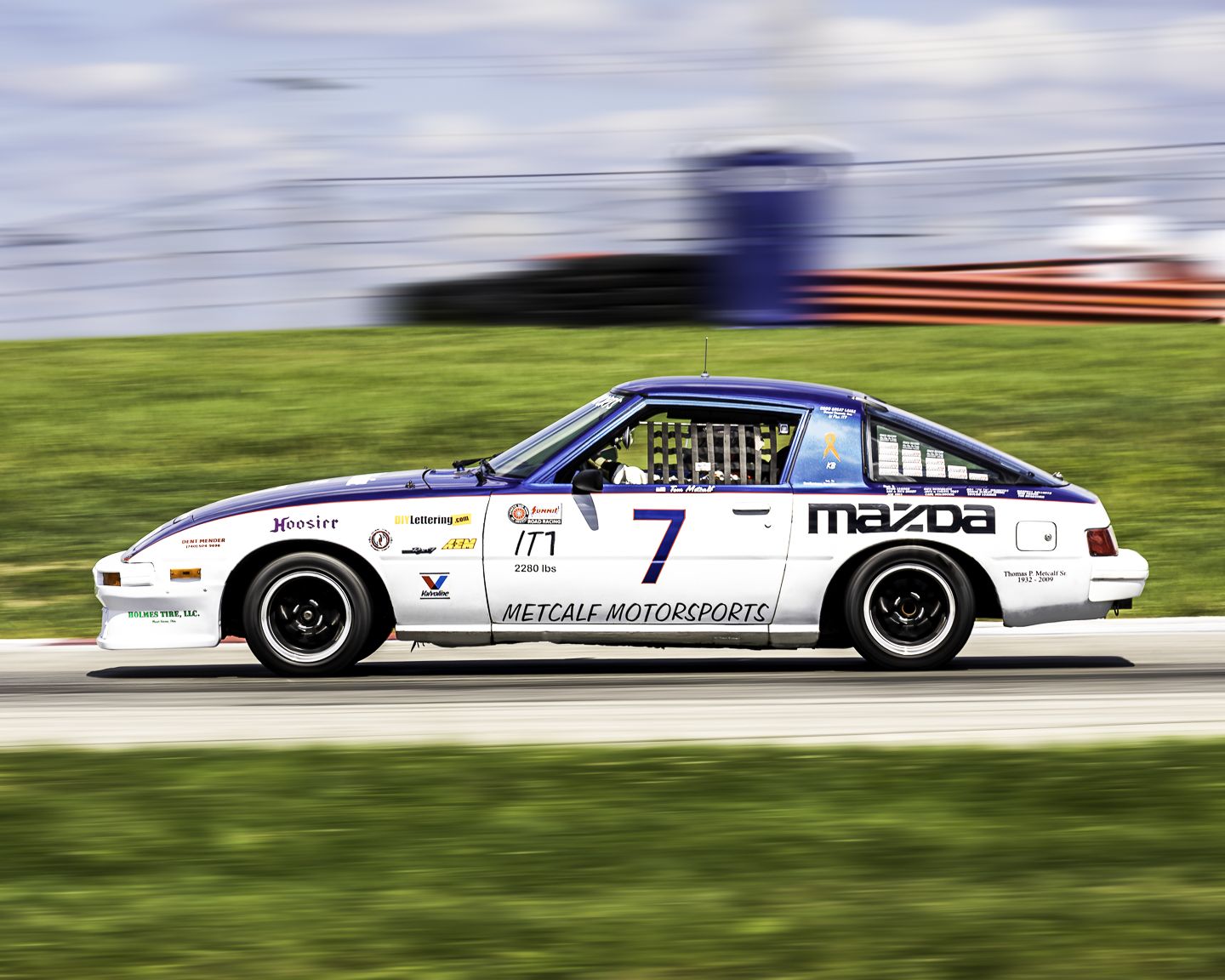
2. **1979–1985 Mazda RX-7**The first-generation Mazda RX-7 stands out as a lean, meticulously engineered, and rotary-powered coupe, often quieter in its appeal compared to its more overtly performance-oriented siblings. Yet, this vehicle offers a profoundly engaging driving experience. Its lightweight construction makes it remarkably tossable and agile, providing a direct connection to the road. The distinctive 12A rotary engine, known for its unique buzzing soundtrack, thrives when revved, delivering a spirited and responsive performance that sets it apart from conventional piston engines.
Beyond its mechanical distinctiveness, the RX-7’s styling has aged remarkably gracefully. Its clean, purposeful lines retain a timeless appeal, showcasing a design ethos focused on balanced aesthetics and aerodynamic efficiency. The overall driving experience is characterized by its purity and unfiltered enjoyment, a testament to Mazda’s commitment to the fundamental principles of sports car dynamics. This unadulterated pleasure contributes significantly to its growing appeal among collectors.
For those seeking vintage Japanese performance with genuine enthusiast credentials, the first-generation RX-7 represents an outstanding value proposition. With current prices generally hovering between $10,000 and $18,000, it remains one of the most affordable ways to acquire a classic JDM (Japanese Domestic Market) sports car. Given its rising collector interest and inherent appeal as a true driver’s car, the RX-7 is positioned for continued appreciation in the classic automotive market, making it a wise and enjoyable investment.
Car Model Information: 1986 Mazda RX-7 GXL 2D Coupe
Name: Mazda RX-7
Caption: 1994 Mazda RX-7 R2 (FD3S)
Manufacturer: Mazda
Aka: Mazda Savanna RX-7 (Japan, 1978–1991),Mazda ɛ̃fini RX-7 (Japan, 1991–1997)
Class: Sports car
Production: 1978–2002,811,634 produced
Assembly: Hiroshima
Platform: Mazda F platform
Layout: Front-engine, rear-wheel-drive layout#Front mid-engine, rear-wheel-drive layout
Predecessor: Mazda RX-3
Successor: Mazda RX-8
Categories: 1980s cars, 1990s cars, 2000s cars, 24 Hours of Le Mans race cars, All articles needing additional references
Summary: The Mazda RX-7 is a front mid engine, rear-wheel-drive, rotary engine-powered sports car, manufactured and marketed by Mazda from 1978 through 2002 across three generations, all of which incorporated the use of a compact, lightweight Wankel rotary engine.
The first-generation RX-7, codenamed SA (early) and FB (late), is a two-seater two-door hatchback coupé. It featured a 12A carbureted rotary engine as well as the option for a 13B rotary engine with electronic fuel injection in later years. The second-generation RX-7, carrying the internal model code FC, was offered as a two-seater coupé with a 2+2 option available in some markets, as well as in a convertible body style. This was powered by the 13B rotary engine, offered in naturally aspirated or turbocharged forms. The third-generation RX-7, model code FD, was offered as a two-seater coupé with a 2+2 version offered as an option for the Japanese market. It featured a sequentially turbocharged 13B REW engine.
More than 800,000 RX-7s were manufactured over its lifetime.
Get more information about: Mazda RX-7
Buying a high-performing used car >>>
Brand: Mazda Model: RX-7
Price: $13,991 Mileage: 52,352 mi.
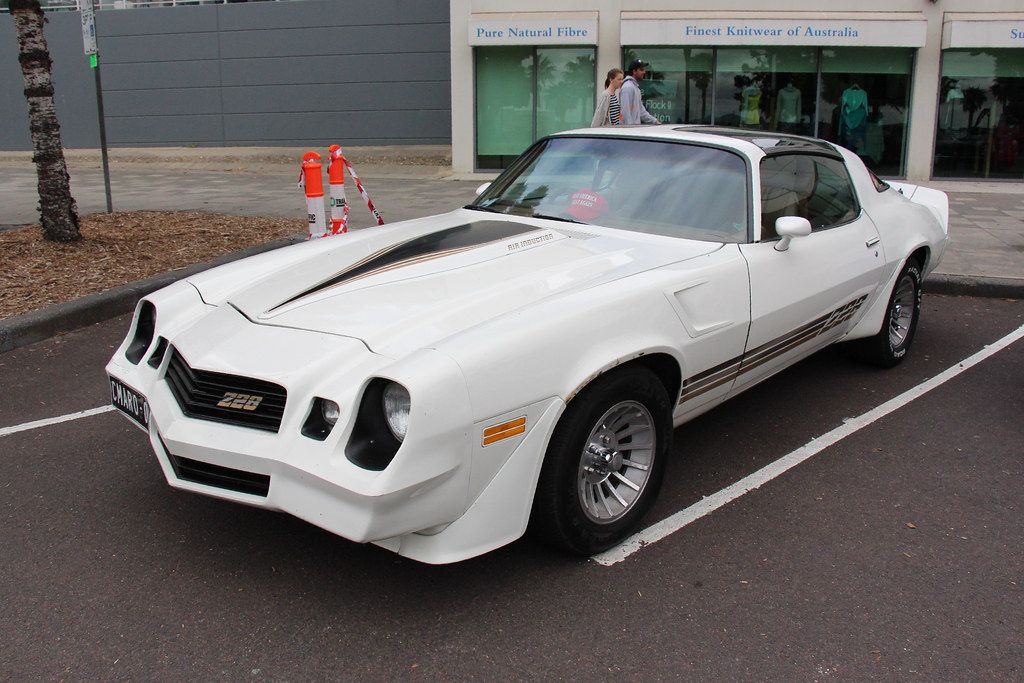
3. **1977–1981 Chevrolet Camaro**For enthusiasts who appreciate the distinctive late-1970s General Motors muscle car aesthetic but find the later C3 Corvette not entirely to their taste, the Chevrolet Camaro Z28 from 1977 to 1981 presents another compelling consideration. This iteration of the Camaro embodies a raw, unadulterated American attitude, reminiscent of the original Bumblebee from Transformers—the car Sam Witwicky famously acquired for a mere $4,000 from a used car lot. It projects that same assertive vibe, characterized by its bold graphics, aggressive scooped hoods, and an unmistakable V8 rumble.
Despite the horsepower and torque limitations imposed by emissions regulations of the era, the Camaro’s visual impact and inherent style remained fully intact. Its design exudes a confident, unpretentious swagger that continues to resonate with enthusiasts of the period. This specific generation maintains a strong and loyal fan base, which, coupled with GM’s extensive parts support infrastructure, makes it one of the most practical and straightforward vintage muscle coupes to own, drive, and genuinely enjoy.
Ultimately, this Camaro offers a budget-friendly entry into the realm of late-1970s cool, delivering authentic V8 swagger without requiring a significant financial outlay. Its visually iconic status, combined with its relative ease of ownership and continued ability to fly somewhat under the mainstream collector radar, positions it as an excellent value. As the context playfully suggests, it worked out just fine for Sam Witwicky, implying a positive return on a discerning investment.
Car Model Information: 1968 Chevrolet Camaro
Name: Chevrolet Camaro
Manufacturer: Chevrolet
Production: 1966–2002,2009–2023
ModelYears: 1967–2002,2010–2024
Class: Pony car
BodyStyle: coupe,convertible
Platform: GM F platform,GM Zeta platform,GM Alpha platform
Layout: Front-engine, rear-wheel-drive layout
Categories: 1970s cars, 1980s cars, 1990s cars, 2+2 coupés, 2000s cars
Summary: The Chevrolet Camaro is a mid-size American automobile manufactured by Chevrolet, classified as a pony car. It first went on sale on September 29, 1966, for the 1967 model year and was designed to compete with the Ford Mustang. The Camaro shared its platform and major components with the Firebird, produced by General Motors’ Pontiac division that was also introduced for the 1967 model year.
Four distinct generations of the Camaro were developed before production ended in 2002. The nameplate was revived on a concept car that evolved into the fifth-generation Camaro; production started on March 16, 2009.
Production of the sixth generation of the Camaro ended in December 2023, for the 2024 model year.
Get more information about: Chevrolet Camaro
Buying a high-performing used car >>>
Brand: Chevrolet Model: Camaro
Price: $79,980 Mileage: 1,713 mi.
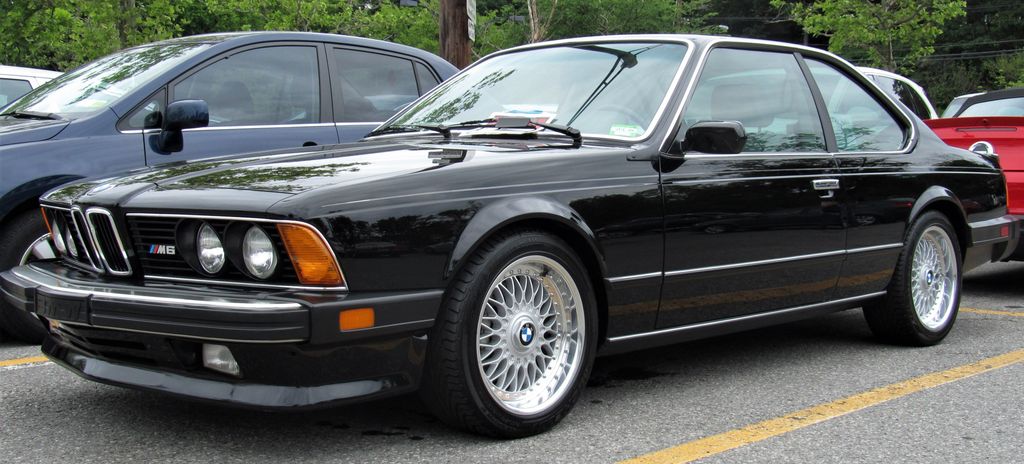
4. **1987 BMW M6**The 1987 BMW M6, riding on the E24 chassis, is a grand touring machine that commands respect, possessing both the visual presence and the performance capability to back it up. Beneath its long, elegantly sculpted hood resides a genuine mechanical marvel: the legendary M88/3 inline-six engine. This powerplant is a direct descendant of the formidable engine found in the iconic BMW M1 supercar, endowing the M6 with a prestigious pedigree and an exhilarating auditory experience as it delivers a distinctive, metallic wail when revs climb.
The M6’s styling, characterized by its aggressive shark-nose front, remains a testament to timeless design. It masterfully blends sophistication with an undeniable hint of menace, ensuring its continued relevance and appeal decades after its production. The interior offers a pure analog luxury experience, devoid of modern digital clutter, providing drivers with essential information through precise gauges, fostering a direct and engaging connection to the machine.
Acquiring a 1987 BMW M6 for under $40,000 represents more than just purchasing a car; it signifies an entry into the foundational “M” legacy, with genuine collector upside. This vehicle delivers supercar bloodlines within the elegant package of a sleek, four-seat coupe that performs as impressively as it looks. Its engine, if properly maintained, demonstrates surprising robustness and reliability. The M6 epitomizes the peak of BMW’s “ultimate driving machine” ethos from an era renowned for truly driver-centric engineering.
Car Model Information: 2008 BMW M6 Base
Name: BMW M6
Manufacturer: BMW M
Layout: Front-engine, rear-wheel-drive
Production: 1983–1989,2005–2019
Assembly: BMW Group Plant Dingolfing
Related: BMW 6 Series,BMW M5
Class: Grand tourer
Successor: BMW M8
Categories: 1980s cars, 2000s cars, 2010s cars, Articles with short description, BMW vehicles
Summary: The BMW M6 is a high-performance version of the 6 Series marketed under the BMW M sub-brand from 1983 to 2019 (with a hiatus from 1990 to 2004).
Introduced in the coupe body style, the M6 was also built in convertible and fastback sedan (‘Gran Coupe’) body styles for later generations. An M6 model was built for each of the first three generations of the 6 Series. Production of the M6 ended in 2019 and it was replaced by the BMW M8 (F91/F92/F93) in 2019.
Get more information about: BMW M6
Buying a high-performing used car >>>
Brand: BMW Model: M6
Price: $25,713 Mileage: 56,527 mi.
Read more about: Rare Cars of the 1980s: Icons of Performance Innovation and Style
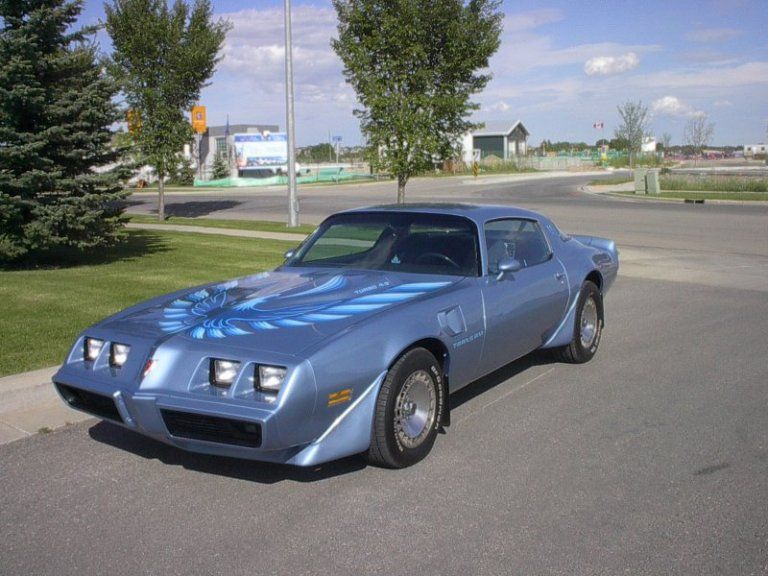
5. **1970–1981 Pontiac Firebird Trans Am**The Pontiac Firebird Trans Am from 1970 to 1981 is an undeniably brash and loud statement on wheels, embodying the raw essence of American muscle with an attitude that suggests it could effortlessly win a bar fight – a fitting characteristic for its 1970s heyday. Whether one opts for the full “Smokey and the Bandit” experience with T-tops and the iconic screaming chicken decal on the hood, or a more understated color scheme, these second-generation muscle cars consistently deliver raw, unadulterated V8 performance. Their formidable road presence commands attention wherever they go, making an undeniable visual and auditory impact.
In recent years, the values for these models have seen a significant surge, particularly for highly desirable variants such as those equipped with the WS6 performance package or the larger 400 and 455-cubic-inch engines. This appreciation highlights their growing recognition as collectible assets. Despite their performance pedigree, the cost of upkeep is surprisingly reasonable, largely due to General Motors’ notoriously vast parts support network, a stark contrast to the often finicky and expensive European exotics. While the average cost is around $50,000, some pristine examples have commanded prices exceeding six figures.
Ultimately, the Pontiac Firebird Trans Am offers a quintessential slice of classic American muscle, combined with appreciating value and all the T-top, “bandit run” attitude an enthusiast could desire. It serves as an instant trigger for nostalgia, and its distinctive silhouette ensures instant recognition from virtually every generation, from seasoned veterans to wide-eyed youngsters. Its blend of cultural significance, performance, and manageable ownership costs makes it a genuinely worthwhile investment for those seeking an iconic piece of automotive history.
Car Model Information: 2024 Genesis GV70 2.5T AWD
Name: Pontiac Firebird
Caption: The second, third, and fourth generations of,the Pontiac Firebird Trans Am
Manufacturer: Pontiac (automobile)
Production: February 23, 1967 – August 30, 2002
ModelYears: 1967 – 2002
Class: Pony car,Muscle car
Platform: GM F platform
Related: Chevrolet Camaro
Layout: Front engine, rear-wheel-drive layout
Categories: 1970s cars, 1980s cars, 1990s cars, 2000s cars, All articles with dead external links
Summary: The Pontiac Firebird is an American automobile built and produced by Pontiac from the 1967 to 2002 model years. Designed as a pony car to compete with the Ford Mustang, it was introduced on February 23, 1967, five months after GM’s Chevrolet division’s platform-sharing Camaro. This also coincided with the release of the 1967 Mercury Cougar, Ford’s upscale, platform-sharing version of the Mustang.
The name “Firebird” was also previously used by GM for the General Motors Firebird series of concept cars in the 1950s.
Get more information about: Pontiac Firebird
Buying a high-performing used car >>>
Brand: Pontiac Model: Firebird Trans Am
Price: $39,995 Mileage: 20,074 mi.

6. **1984–1991 Porsche 944 Turbo**While the esteemed Porsche 911 series traditionally garners widespread acclaim and, consequently, stratospheric price tags, the Porsche 944 Turbo from 1984 to 1991 quietly stands as the connoisseur’s choice. Often referred to as the “thinking man’s Porsche,” it provides an exceptional balance of performance, handling, and value that sets it apart. Its near-perfect 50:50 weight distribution, achieved through its sophisticated transaxle layout, contributes significantly to its superb handling dynamics, making it incredibly responsive and predictable.
This precision is complemented by a turbocharged punch that firmly presses occupants into their seats upon acceleration. The vehicle’s ride is surgically precise in corners, allowing drivers to carve apexes with remarkable accuracy and confidence. This engineering prowess translates into an intensely engaging and rewarding driving experience, particularly for those who prioritize handling fidelity over raw, straight-line speed.
The 944 Turbo’s understated, almost elegant styling has aged beautifully, proving its timeless design. Despite its capabilities and Porsche lineage, prices for these models, though steadily climbing, remain remarkably reasonable compared to other Porsches of similar caliber. Currently, it’s possible to acquire one for around $28,000, presenting a genuine performance bargain that delivers significant driving thrills without severely impacting one’s savings. It is arguably the best-kept secret in the Porsche world, offering real track capability and genuine collector upside that is only now beginning to be fully recognized, affirming that front-engined Porsches are indeed special and worthy investments.
Car Model Information: 2024 Genesis GV70 2.5T AWD
Caption: 1986 944 Turbo (951) US-spec
Name: Porsche 944
Manufacturer: Porsche AG
Class: Sports car
Production: 1982–1991
Layout: Front-engine, rear-wheel-drive layout
Assembly: Neckarsulm,Stuttgart
Designer: Harm Lagaay
Predecessor: Porsche 924
Successor: Porsche 968
BodyStyle: coupé,convertible
Engine: Straight-four engine,Turbocharger,2.7 L M44/12 I4,3.0 L M44/41 I4
Wheelbase: 2400 mm
Abbr: on
Length: 1986–1988: {{convert,4318,mm,in,1,abbr=on
Width: 1735 mm
Height: 1275 mm
Transmission: Automatic transmission,Manual transmission
Weight: Pre-1988: {{convert,1180,kg,lb,0,abbr=on
Categories: 1990s cars, All articles needing additional references, All articles with unsourced statements, Articles needing additional references from September 2024, Articles with short description
Summary: The Porsche 944 is a sports car manufactured by German automobile manufacturer Porsche from 1982 until 1991. A front-engine, rear-wheel drive mid-level model based on the 924 platform, the 944 was available in coupé or cabriolet body styles, with either naturally aspirated or turbocharged engines. With over 163,000 cars produced, the 944 was the most successful sports car in Porsche’s history until the introductions of the Boxster and 997 Carrera.
Extensive design revisions for the 1992 model year prompted Porsche to drop the 944 nameplate and rebrand the vehicle as the 968.
Get more information about: Porsche 944
Buying a high-performing used car >>>
Brand: Porsche Model: 944 Turbo
Price: $39,995 Mileage: 20,074 mi.
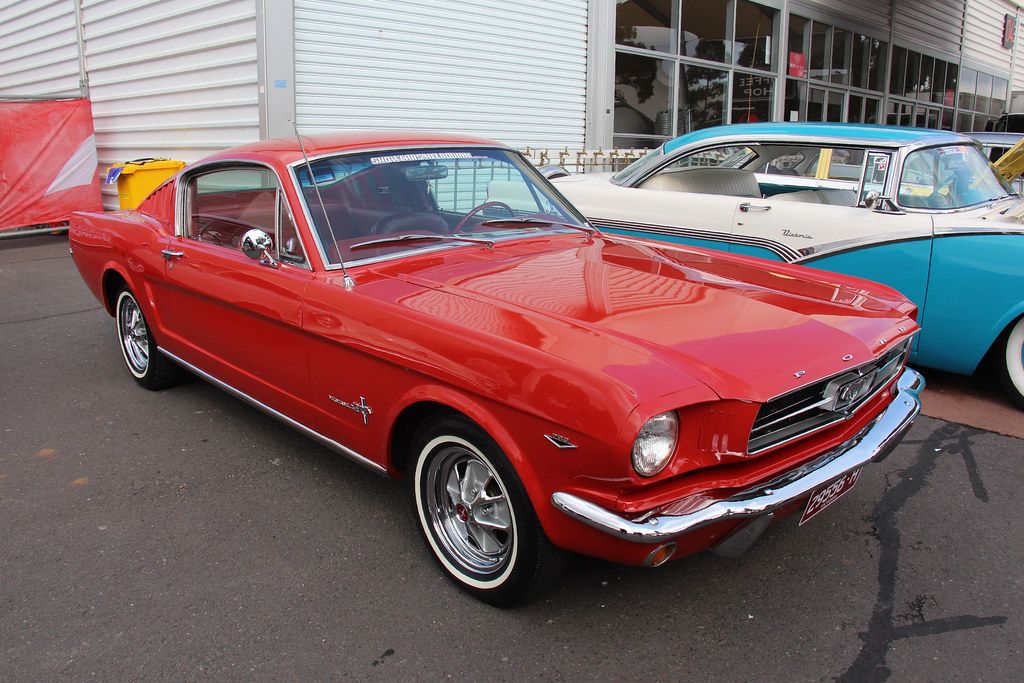
7. **1965–1970 Ford Mustang (First Generation)**The original Ford Mustang transcends its status as merely a car; it is a bona fide piece of rolling Americana, representing a cultural phenomenon that successfully democratized style and muscle for the masses. Decades after its introduction, it consistently ranks among the most approachable, beloved, and endlessly customizable classic vehicles available in the market. Its timeless aesthetic and broad appeal ensure a robust and consistent demand from enthusiasts and collectors alike, making it a stable asset.
This generation of Mustang offers a wide array of configurations, including sleek coupes, comfortable cruising convertibles, and the iconic fastbacks, ensuring there is a variant to suit virtually every enthusiast’s taste and financial plan. Acquiring a classic muscle car with such profound cultural significance for approximately $40,000 presents a highly compelling value proposition, particularly when considering its widespread recognition and enduring popularity. Furthermore, the Mustang benefits immensely from a vast and comprehensive aftermarket parts industry, so extensive that one could theoretically construct an entirely new Mustang from available components. This readily available supply of parts significantly simplifies ownership and maintenance, making it a practical choice for a vintage vehicle.
From an investment perspective, this Mustang is remarkably straightforward to own and delivers an incredibly enjoyable driving experience. Its presence reliably garners approving nods and waves from every generation, from seasoned automotive veterans who remember its debut to wide-eyed children encountering its legacy for the first time. It serves as the ultimate adaptable platform, whether one desires a canvas for extensive personalization and customization or prefers a perfectly preserved, bone-stock cruiser, thus solidifying its status as a consistently worthwhile classic car investment. Its appeal is rooted in both its iconic design and its tangible practicality.
Car Model Information: 2024 Ford Mustang Mach-E GT
Name: Ford Mustang
Caption: 2018 Ford Mustang GT 5.0
Aka: Ford T5 (Germany)
Manufacturer: Ford Motor Company
Production: March 1964 – present
ModelYears: 1965–present
Class: Unbulleted list
BodyStyle: Unbulleted list
Layout: Front-engine, rear-wheel-drive layout
Categories: 1970s cars, 1980s cars, 1990s cars, 2+2 coupés, 2000s cars
Summary: The Ford Mustang is a series of American automobiles manufactured by Ford. In continuous production since 1964, the Mustang is currently the longest-produced Ford car nameplate. Currently in its seventh generation, it is the fifth-best selling Ford car nameplate. The namesake of the “pony car” automobile segment, the Mustang was developed as a highly styled line of sporty coupes and convertibles derived from existing model lines, initially distinguished by “long hood, short deck” proportions.
Originally predicted to sell 100,000 vehicles yearly, the 1965 Mustang became the most successful vehicle launch since the 1927 Model A. Introduced on April 17, 1964 (16 days after the Plymouth Barracuda), over 400,000 units were sold in its first year; the one-millionth Mustang was sold within two years of its launch. In August 2018, Ford produced the 10-millionth Mustang; matching the first 1965 Mustang, the vehicle was a 2019 Wimbledon White convertible with a V8 engine.
The success of the Mustang launch led to multiple competitors from other American manufacturers, including the Chevrolet Camaro and Pontiac Firebird (1967), AMC Javelin (1968), and Dodge Challenger (1970). It also competed with the Plymouth Barracuda, which was launched around the same time. The Mustang also had an effect on designs of coupes worldwide, leading to the marketing of the Toyota Celica and Ford Capri in the United States (the latter, by Lincoln-Mercury). The Mercury Cougar was launched in 1967 as a unique-bodied higher-trim alternative to the Mustang; during the 1970s, it included more features and was marketed as a personal luxury car.
From 1965 until 2004, the Mustang shared chassis commonality with other Ford model lines, staying rear-wheel-drive throughout its production. From 1965 to 1973, the Mustang was derived from the 1960 Ford Falcon compact. From 1974 until 1978, the Mustang (denoted Mustang II) was a longer-wheelbase version of the Ford Pinto. From 1979 until 2004, the Mustang shared its Fox platform chassis with 14 other Ford vehicles (becoming the final one to use the Fox architecture). Since 2005, Ford has produced two generations of the Mustang, each using a distinct platform unique to the model line.
Through its production, multiple nameplates have been associated with the Ford Mustang series, including GT, Mach 1, Boss 302/429, Cobra (separate from Shelby Cobra), and Bullitt, along with “5.0” fender badging (denoting 4.9 L OHV or 5.0 L DOHC V8 engines).
Get more information about: Ford Mustang
Buying a high-performing used car >>>
Brand: Ford Model: Mustang
Price: $41,094 Mileage: 12,668 mi.
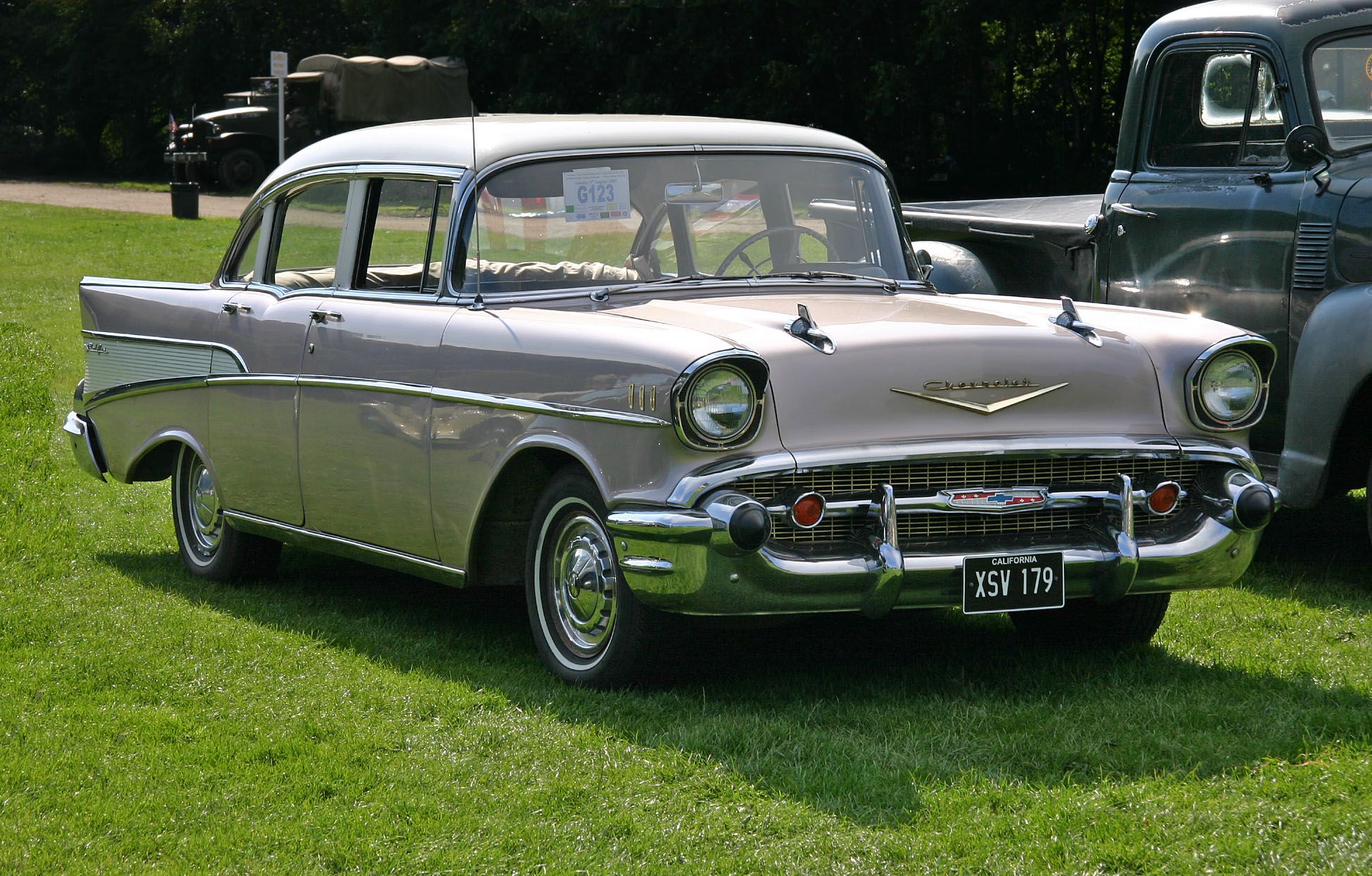
8. **1957 Chevrolet Bel Air**For those whose investment criteria include acquiring a quintessential piece of American automotive history, the 1957 Chevrolet Bel Air unequivocally stands as the undisputed rock star of the Tri-Five era. This vehicle is a finned, chrome-draped icon that profoundly embodies American postwar optimism and boundless energy, instantly evoking a powerful sense of nostalgia for a distinctly bygone era. Its signature two-tone paint schemes, those glorious gold badges, and the expansive panoramic wraparound windshield collectively serve as an instant time machine, effortlessly transporting observers to a simpler period characterized by soda fountains and drive-in movie theaters.
Regardless of whether a potential investor uncovers a meticulously preserved, bone-stock example or a creatively restomodded version, the Bel Air consistently commands significant attention and reliably maintains its value, akin to a blue-chip stock within a diversified financial portfolio. The opportunity to acquire a tangible piece of the 1950s’ rebellious spirit for an average price of around $45,000 is widely considered a judicious investment, particularly given its unwavering cultural prominence. Its enduring presence and iconic status are further underscored by its memorable appearances in popular culture, such as the thrilling chase scene in “Thunder and Lightning,” where the Bel Air famously displayed its resilience by flying down a bridge on its right side.
Ultimately, the 1957 Chevrolet Bel Air represents the very embodiment of the American dream on wheels, a testament to mid-century design and engineering. Its distinctive styling, profound cultural cachet, and enduring collectibility ensure that it genuinely never goes out of fashion or loses its appeal in the market. This vehicle is an assured conversation starter at any car show, classic cruise night, or even a casual stop at a gas station, highlighting its timeless allure and its robust potential as a long-term investment. Its broad appeal ensures continued demand.
Car Model Information: 2024 Genesis GV70 2.5T AWD
Name: Chevrolet Bel Air
Caption: 1957 Chevrolet Bel Air convertible
Manufacturer: Chevrolet
Production: 1949–1980
ModelYears: 1950–1981
Class: Full-size
Layout: FR layout
Predecessor: Chevrolet Fleetline,Chevrolet Biscayne
Successor: Chevrolet Impala
Categories: 1950s cars, 1960s cars, 1970s cars, 1980s cars, Articles with short description
Summary: The Chevrolet Bel Air is a full-size car produced by Chevrolet for the 1950–1981 model years. Initially, only the two-door hardtops in the Chevrolet model range were designated with the Bel Air name from 1950 to 1952. With the 1953 model year, the Bel Air name was changed from a designation for a unique body shape to a premium level of trim applied across a number of body styles. The Bel Air continued with various other trim level designations, and it had gone from a mid-level trim car to a budget fleet sedan when U.S. production ceased in 1975. Production continued in Canada, for its home market only, through the 1981 model year.
Get more information about: Chevrolet Bel Air
Buying a high-performing used car >>>
Brand: Chevrolet Model: Bel Air
Price: $39,995 Mileage: 20,074 mi.
Read more about: The 18 Beloved Cars We Wish They Would Bring Back
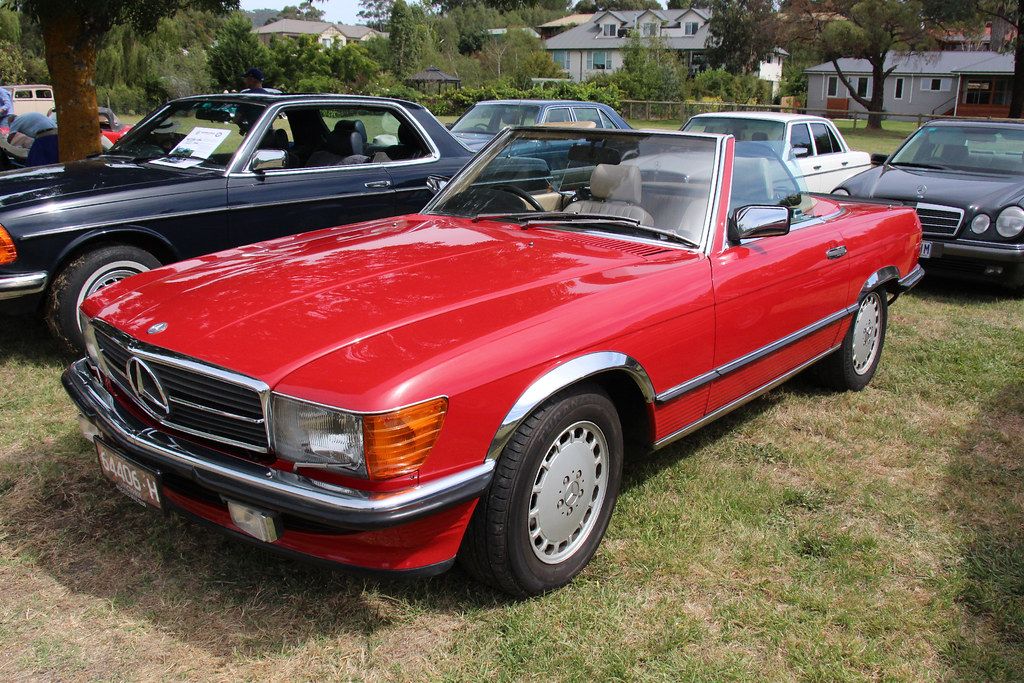
9. **1981–1989 Mercedes-Benz 560SL (R107)**For discerning enthusiasts who prioritize classic sophistication harmoniously blended with robust German engineering prowess, the Mercedes-Benz 560SL, riding on the R107 chassis, presents an exceptional and often undervalued choice. This particular V8-powered convertible conveys an immediate sense of being meticulously carved from a single block of granite, exhibiting remarkable structural integrity, immense solidity, and unwavering dependability throughout its extensive production run. The driving experience it offers is more precisely described as that of a stately, comfortable cruiser rather than an agile canyon carver, a characteristic that distinctly defines its enduring charm and appeals strongly to a specific type of driver seeking refined motoring.
This model is ideally suited for leisurely Sunday drives to the country club, where its elegant lines can be appreciated, or for more spirited blasts down a picturesque coastal highway, all typically achievable for an average purchase price of around $32,000. These vehicles are also notable for being relatively straightforward to maintain, benefiting from Mercedes-Benz’s reputation for robust engineering and good parts availability for models of this era. This factor is a significant advantage for classic car ownership, as readily available components contribute to its long-term viability and ease of stewardship as an investment.
The 560SL’s timeless Mercedes design successfully combines a luxurious ambiance with unflappable reliability, a combination that has historically translated into continuously growing collector demand. It offers the perfect synthesis of classy open-air motoring without the inherent complexities or the often astronomical price tags associated with more contemporary luxury convertibles. This unique blend of classic aesthetics, resilient build quality, and increasing market interest firmly positions the Mercedes-Benz 560SL as a solid and increasingly attractive classic car investment, offering both enjoyment and potential appreciation.
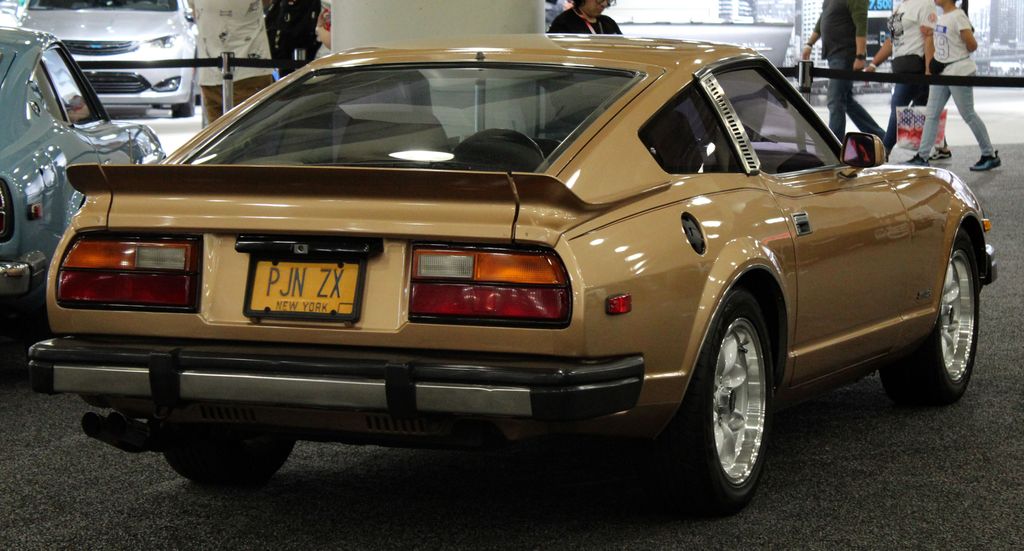
10. **1978–1983 Datsun 280ZX**While frequently overshadowed by its earlier, more minimalist and purist siblings, such as the iconic 240Z and 260Z, the Datsun 280ZX is truly the dark horse within the legendary Z-car family, deserving of re-evaluation. This particular iteration represents a deliberate shift towards a more refined and comfortable driving experience compared to the raw originals, yet it meticulously retains the signature long-hood, short-deck coupe feel that has historically defined the entire Z-car breed. Its design subtly evolved to offer a more luxurious and grand touring interpretation of the classic Japanese sports car formula.
With its values steadily climbing—especially for desirable turbo models, which now frequently command prices upwards of $20,000—and supported by a rapidly expanding, passionate fan base, particularly as Japanese Domestic Market (JDM) cars from the 1970s and 1980s continue to gain significant momentum in the collector world, the 280ZX is finally receiving the long-overdue respect it unequivocally deserves. Its styling embodies pure late-1970s futurism, presenting a compelling and distinctive blend of sleek sports car aesthetics with hints of a “disco spaceship” vibe, all contributing to its undeniable cool factor and unique visual identity.
From a practical investment standpoint, the 280ZX offers genuine vintage Japanese charm, proudly carrying the coveted Z-car heritage that resonates deeply with enthusiasts. It provides a driving experience that remains engaging and rewarding, all at a price point that is currently far more reasonable than its revered older Z-car brothers. However, given the rapid appreciation witnessed in similar JDM classics, this relative affordability is highly unlikely to persist indefinitely, strongly suggesting that now is an exceptionally opportune time for discerning collectors to consider acquiring one before prices climb further out of reach.
Car Model Information: 1980 Datsun 280ZX 10TH ANNIVERSARY
Name: Nissan S130
Aka: Datsun 280ZX,Nissan Fairlady Z
Caption: 1982 Datsun 280ZX 2+2 (Europe)
Class: Sports car
Manufacturer: Nissan
BodyStyle: fastback
Production: June 1978–1983
Layout: Front-engine, rear-wheel-drive layout
Assembly: ubl
Engine: Nissan L engine#L20,Straight-six engine
Transmission: Borg-Warner,Borg-Warner T-5 transmission
Predecessor: Nissan Fairlady Z (S30)
Successor: Nissan 300ZX#Z31
Weight: 1281 kg
Abbr: on 2+2
Wheelbase: 2320 mm
Length: 4420 mm
Width: 1690 mm
Height: 1295 mm
Categories: 1980s cars, All articles needing additional references, All articles with unsourced statements, Articles needing additional references from May 2018, Articles with short description
Summary: The Nissan S130 is a sports coupé produced by Nissan in Japan from 1978 until 1983. It was sold as the Datsun 280ZX, Nissan Fairlady Z and Nissan Fairlady 280Z, depending on the market. In Japan, it was exclusive to Nissan Bluebird Store locations. It was the second generation Z-car, replacing the Nissan Fairlady Z (S30) in late 1978. The 280ZX was the first time the “by Nissan” subscript was badged alongside the Datsun logo, along with Nissan trucks. The 280ZX was Motor Trend’s import car of the year for 1979. The 280ZX was replaced by the Nissan 300ZX in 1984.
Get more information about: Nissan Fairlady Z (S130)
Buying a high-performing used car >>>
Brand: Datsun Model: 280ZX
Price: $69,980 Mileage: 17,351 mi.
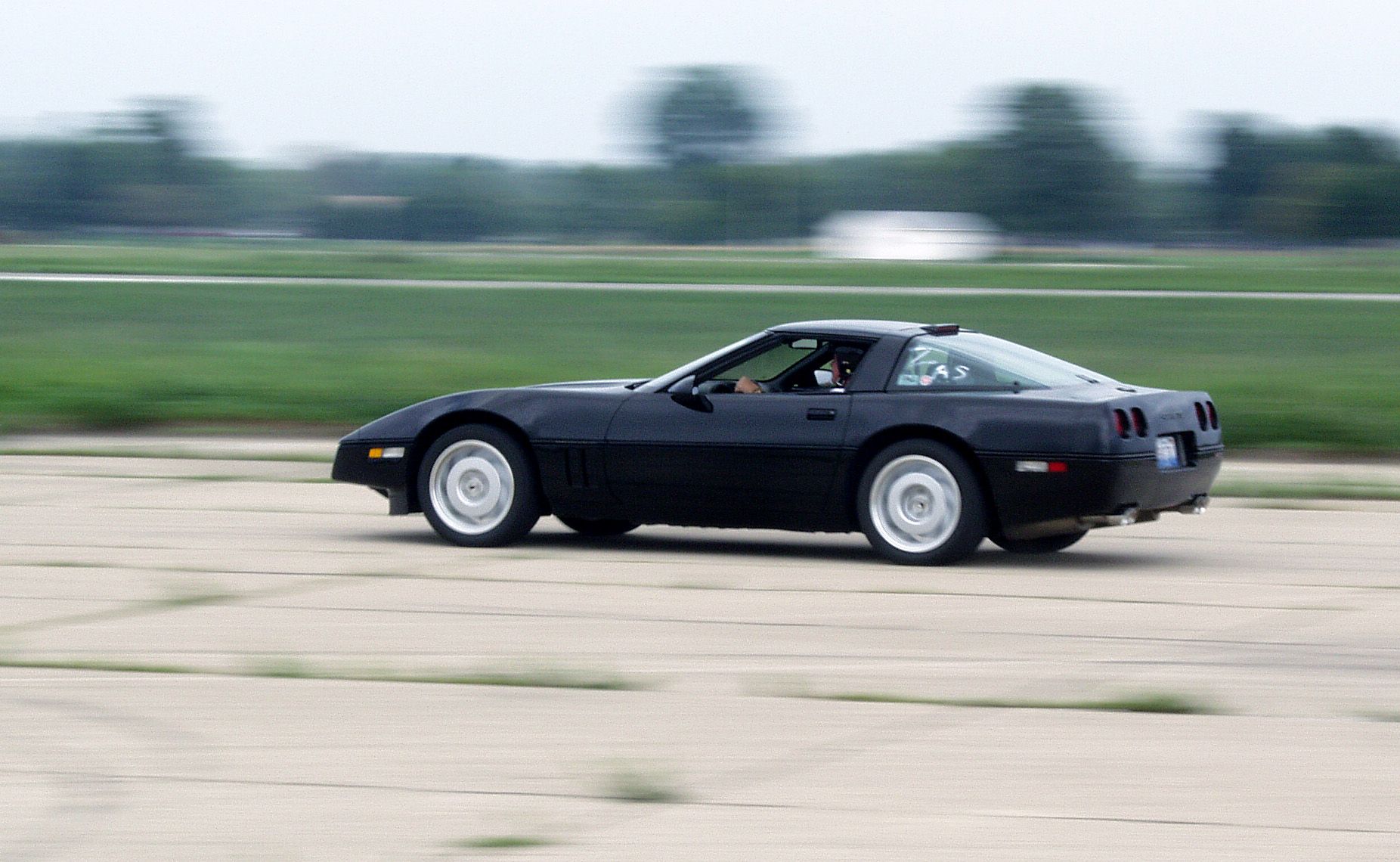
11. **1990–1996 Chevrolet Corvette C4 ZR-1**The Chevrolet Corvette C4 ZR-1 unequivocally represented General Motors’ audacious “moonshot,” conceived and brought to fruition as a genuine American supercar born from a distinctive blend of American grit and significant international collaboration. At its mechanical heart lay the groundbreaking Lotus-engineered, Mercury Marine-built LT5 V8 engine—a truly glorious 32-valve, quad-cam beast of a powertrain. This formidable engine was capable of delivering an astonishing 375 horsepower initially (later increased to 405 hp), a figure that, in its day, enabled it to outcompete and even humiliate many contemporary exotics from Europe.
While its distinctive digital dashboard and sharp, aggressive wedge-shaped silhouette undeniably evoke the specific aesthetics of the 1990s, the vehicle’s sheer performance capabilities remain genuinely impressive even by stringent modern standards, offering a thrilling and capable driving experience. Its inherent rarity, with just over 6,900 units meticulously produced throughout its run, combined with its undisputed racing pedigree in various motorsport venues, is now drawing increasingly serious attention from dedicated collectors and performance enthusiasts. Even in a bone-stock configuration, the ZR-1 remains a formidable weapon on the track and an undeniable statement on the street, all for a remarkably accessible price range typically between $34,000 and $44,000.
The Corvette C4 ZR-1 stands out as a genuine supercar sleeper that remains remarkably attainable, offering an incredible return on investment in terms of raw performance and exclusivity for the price point. This makes it an exceptionally compelling proposition for those seeking a high-performance classic that delivers beyond expectations. However, based on observed current market trends and the accelerating pace of collector recognition for these specific models, it is highly improbable that this level of “attainability” will persist for much longer, making timely acquisition a wise strategic move for serious investors.
Car Model Information: 2024 Genesis GV70 2.5T AWD
Name: Chevrolet Corvette (C4)
Caption: 1994 Chevrolet Corvette
Manufacturer: Chevrolet
Production: January 3, 1983 – June 20, 1996
ModelYears: 1984–1996
Predecessor: Chevrolet Corvette (C3)
Successor: Chevrolet Corvette (C5)
Class: Sports car
Assembly: Bowling Green, Kentucky
BodyStyle: targa top,Convertible (car)
Layout: Front-engine, rear-wheel-drive layout#FMR
Platform: GM Y platform
Wheelbase: cvt
Length: cvt
Width: cvt
Height: Coupe: {{cvt,46.7,in,mm
Transmission: automatic transmission,Overdrive (mechanics),GM 4L60-E transmission,ZF Friedrichshafen
Engine: {{cvt,350,cuin,L,1,Chevrolet small-block engine (first- and second-generation)#L83
Weight: cvt
Designer: Jerry Palmer
Related: Callaway Cars#C4 (RPO B2K Callaway Twin Turbo Corvette),Callaway Cars#C4 (RPO B2K Callaway Twin Turbo Corvette),Callaway Cars#C4 (RPO B2K Callaway Twin Turbo Corvette),Callaway Cars#C6 (Callaway SuperNatural Corvette),Callaway Cars#C4 (RPO B2K Callaway Twin Turbo Corvette)
Categories: 1990s cars, All articles with dead external links, All articles with unsourced statements, Articles with dead external links from November 2016, Articles with permanently dead external links
Summary: The Chevrolet Corvette (C4) is the fourth generation of the Corvette sports car, produced by American automobile manufacturer Chevrolet from 1983 until 1996. The convertible returned, as did higher performance engines, exemplified by the 375 hp (280 kW) LT5 found in the ZR1. In early March 1990, the ZR1 would set new records for the highest average speed over 24 hours at over 175 mph (282 km/h) and highest average speed over 5,000 miles at over 173 mph (278 km/h). With a completely new chassis, modern sleeker styling, and other improvements to the model, prices rose and sales declined. The last C4 was produced on June 20, 1996.
Get more information about: Chevrolet Corvette (C4)
Buying a high-performing used car >>>
Brand: Chevrolet Model: Corvette C4 ZR-1
Price: $39,995 Mileage: 20,074 mi.
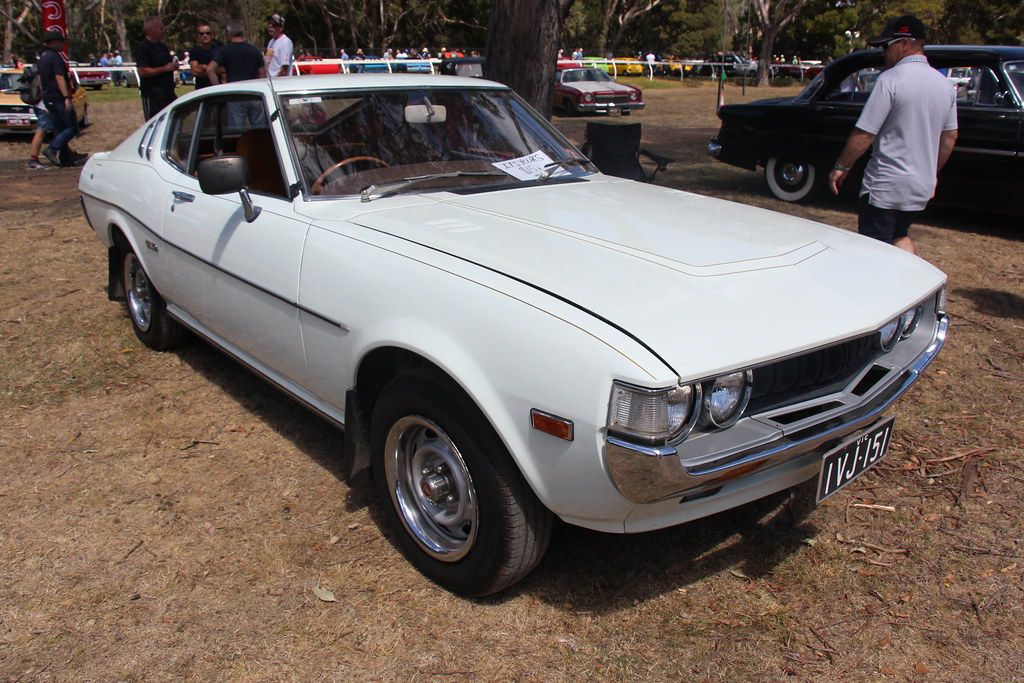
12. **1971–1977 Toyota Celica (First Generation)**Often affectionately referred to as the “Japanese Mustang,” and for very compelling reasons, the early Toyota Celica successfully brought stylish sports coupe flair and aspirational design to the masses, combined seamlessly with Toyota’s hallmark bulletproof reliability. This potent combination created a vehicle that was not only aesthetically appealing with its clean lines but also remarkably dependable and economical to own. Its lightweight construction, inherent robustness, and surprisingly engaging driving dynamics collectively provide a genuine classic car experience without the myriad financial headaches and complexities often associated with some of its older, more temperamental American counterparts.
As interest in vintage Japanese Domestic Market (JDM) vehicles continues to grow exponentially across global collector communities, first-generation Celicas are garnering significant and increasing traction among both dedicated collectors and general enthusiasts. They are particularly appreciated for their clean, timeless lines and inherent toughness, making them highly desirable assets in the burgeoning JDM classic market. The average cost for these models currently ranges from $15,000 to $25,000, presenting a relatively accessible entry point into classic JDM ownership compared to many other appreciating models. Furthermore, its subtly flared rear arches, long hood, and classic chrome mirrors continue to present an incredibly sharp and attractive aesthetic in any setting, solidifying its timeless design and visual appeal.
The first-generation Toyota Celica is a stylish, reliable, and mechanically simple classic car that, for the moment, remains genuinely affordable. However, its market value is clearly on a steady upward trajectory, indicating that it is positioned to become a highly sought-after and significantly more valuable collectible in the near future. Astute investors and passionate enthusiasts are strongly advised to consider acquiring one now, before these models potentially become the next six-figure JDM hero, following the established path of other rapidly appreciating Japanese classics. Its blend of classic charm, practicality, and appreciating value makes it an exceptional choice.
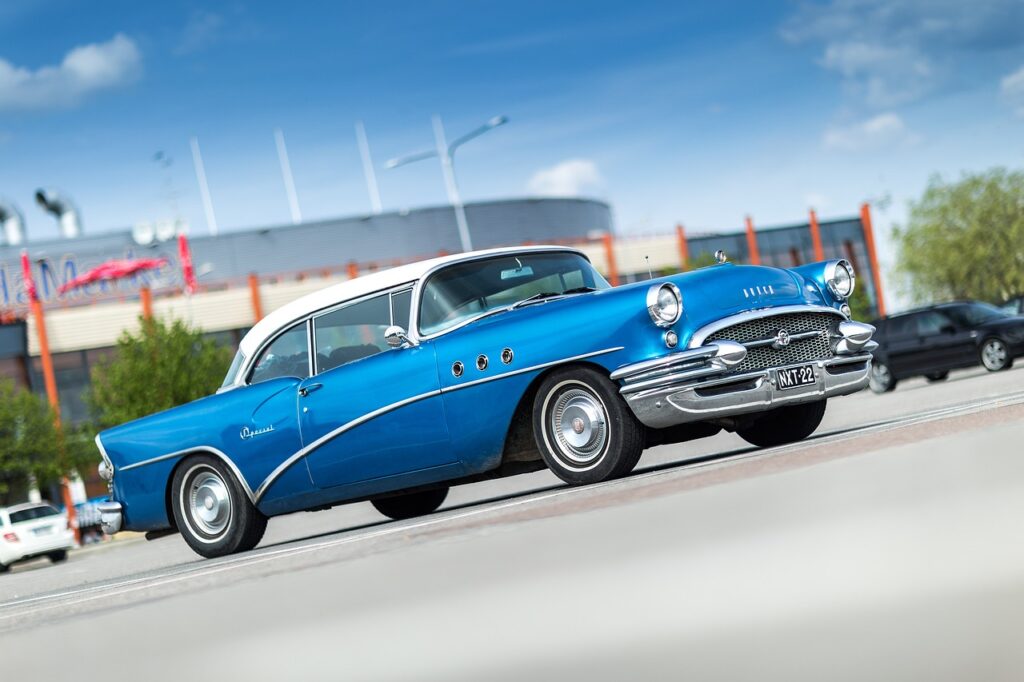
**Conclusion: Chrome, Carburetors, and Common Sense**
If you are a true automotive enthusiast and you’ve diligently worked and saved, you should feel no reservation in pursuing the acquisition of something cool and personally meaningful. These carefully selected classic vehicles are more than just modes of transportation; they consistently deliver an unparalleled experience, embodying a distinctive look, an evocative sound, and a tangible feel that connects you directly to automotive history. They achieve this without squandering the significant hard work and sacrifices that have brought you to this fortunate position, ensuring your investment is both fiscally sound and deeply satisfying.
Car Model Information: 1988 Toyota Celica GT
Name: Toyota Celica
Caption: 1994 Toyota Celica GT-Four (ST205, UK)
Manufacturer: Toyota
Production: December 1970
ModelYears: 1971–2005
Assembly: Susono,Shizuoka Prefecture
Class: Sports car
BodyStyle: unbulleted list
Layout: unbulleted list
Categories: 1980s cars, 1990s cars, 2000s cars, Accuracy disputes from August 2020, All-wheel-drive vehicles
Summary: The Toyota Celica ( or ) (Japanese: トヨタ・セリカ, Hepburn: Toyota Serika) is an automobile produced by Toyota from 1970 until 2006. The Celica name derives from the Latin word coelica meaning heavenly or celestial. In Japan, the Celica was exclusive to Toyota Corolla Store dealer chain. Produced across seven generations, the Celica was powered by various four-cylinder engines, and body styles included convertibles, liftbacks, and notchback coupé.
In 1973, Toyota coined the term liftback to describe the Celica fastback hatchback, and the GT Liftback would be introduced for the 1976 model year in North America. Like the Ford Mustang, the Celica concept was to attach a coupe body to the chassis and mechanicals from a high volume sedan, in this case the Toyota Carina.
The first three generations of North American market Celicas were powered by variants of Toyota’s R series engine. In August 1985, the car’s drive layout was changed from rear-wheel drive to front-wheel drive, and all-wheel drive turbocharged models were manufactured from October 1986 to June 1999. Variable valve timing came in certain Japanese models starting from December 1997 and became standard in all models from the 2000 model year. In 1978, a restyled six-cylinder variant was introduced as the Celica Supra (Celica XX in Japan); it would be spun off in 1986 as a separate model, becoming simply the Supra. Lightly altered versions of the Celica were also sold through as the Corona Coupé through the Toyopet dealer network from 1985 to 1989, and as the Toyota Curren through the Vista network from 1994 to 1998.
Get more information about: Toyota Celica
Buying a high-performing used car >>>
Brand: Toyota Model: Celica
Price: $5,588 Mileage: 162,656 mi.
The core philosophy here is simple yet profound: aim for smart buys that promise great drives. This is the overarching goal of discerning classic car investment. In the evolving realm of automotive assets, choosing a vintage vehicle that harmoniously aligns with both your financial objectives and your profound personal passion ensures a rewarding ownership experience. This experience transcends mere monetary returns, offering a unique blend of historical preservation, community engagement, and pure, unadulterated driving pleasure that few other investments can match.

